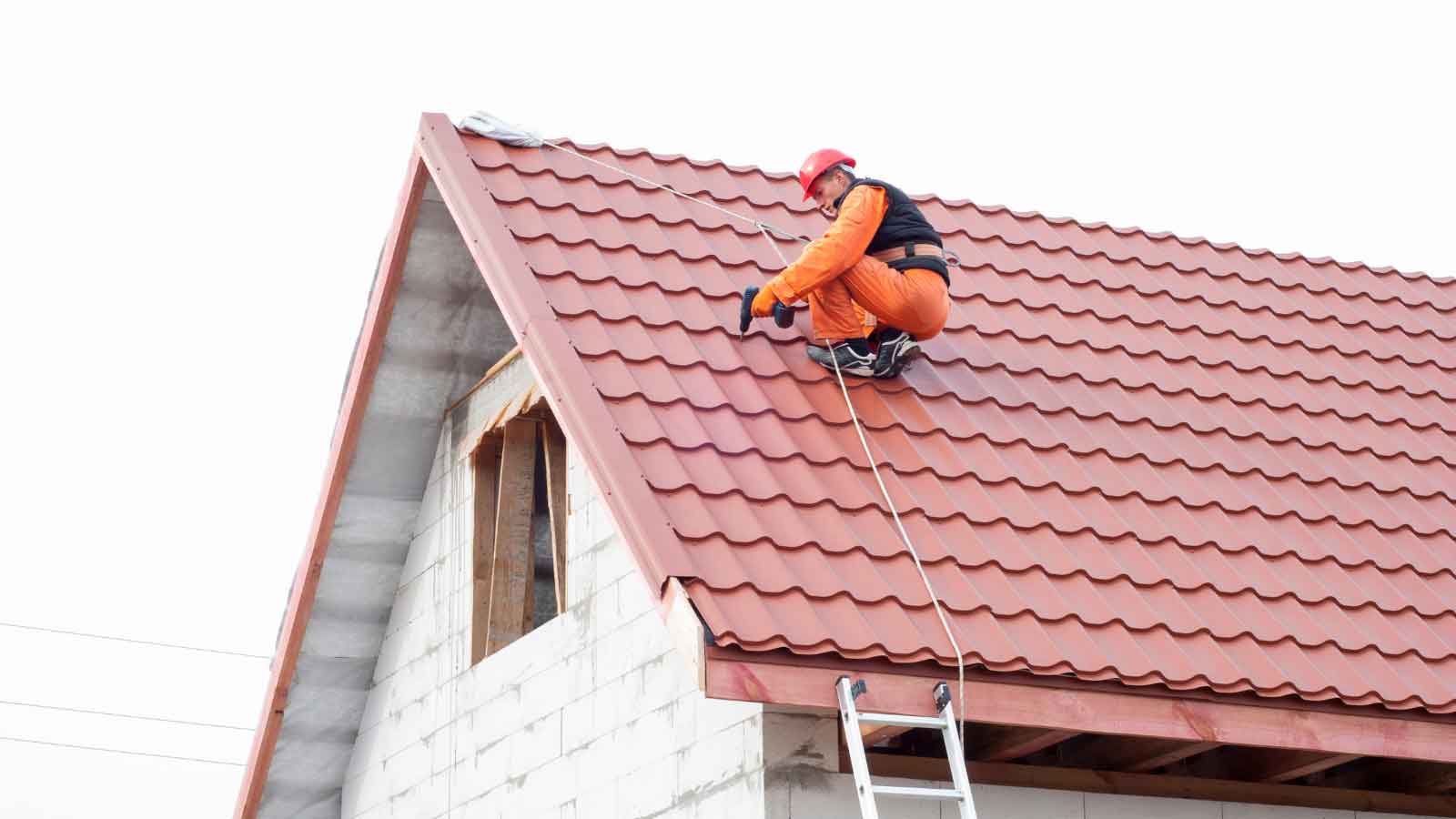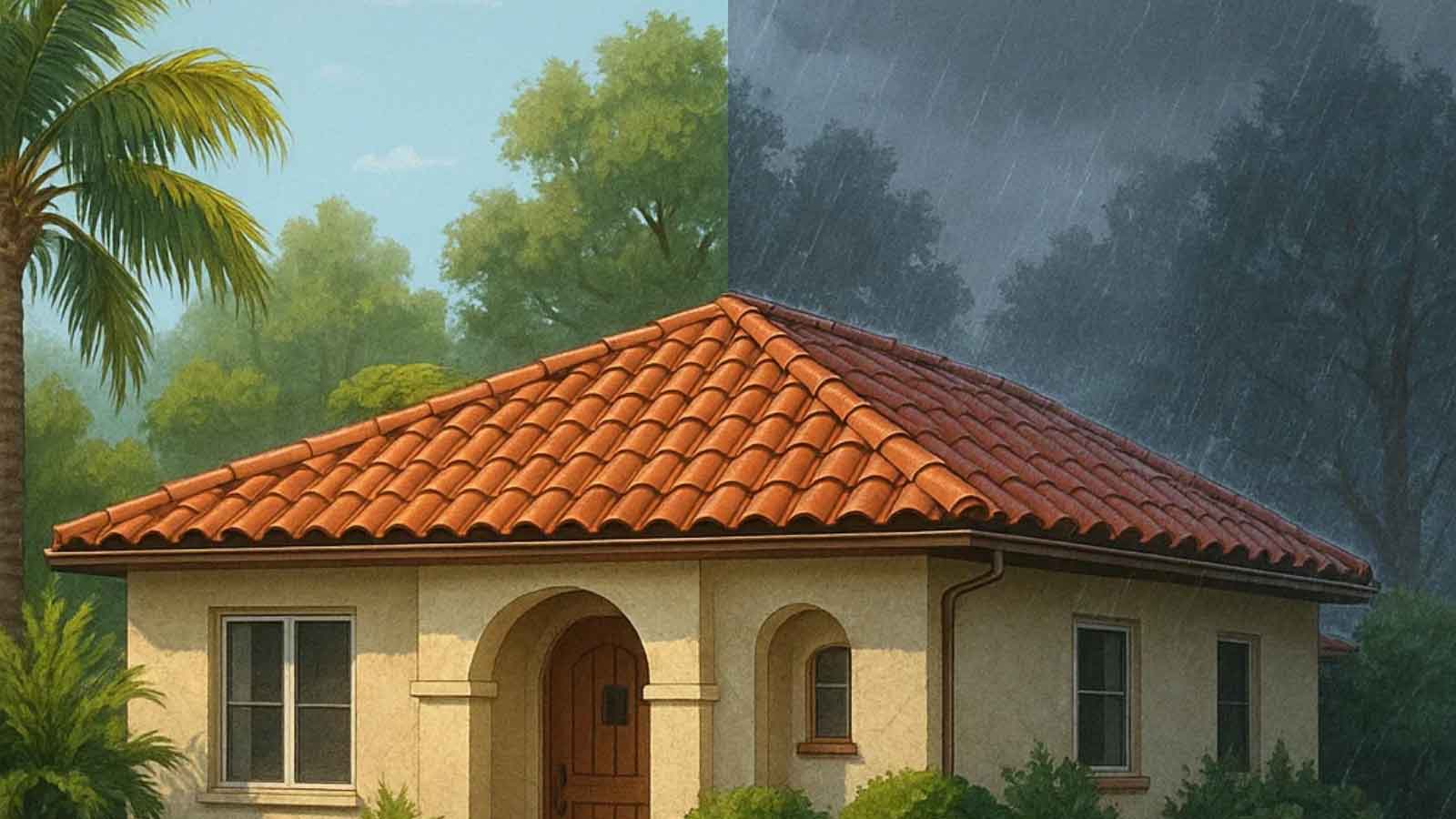When filing a roof damage claim in Orange County, you’ll need to document the damage thoroughly with photos and professional inspections. Most policies cover sudden damage from wind, hail, falling objects, and storms, but may exclude normal wear. Act quickly, report damage within 24-72 hours and understand your policy’s specific provisions. Work cooperatively with adjusters during inspections and have all documentation ready. The right approach can greatly improve your chances of a successful settlement.
Types of Roof Damage Covered by Homeowners Insurance in Orange County
While many Orange County homeowners assume their insurance policies cover all roof damage, specific types of incidents typically qualify for claims. Most standard policies cover sudden, accidental damage from external forces rather than gradual deterioration.
Wind damage is commonly covered, including torn shingles, lifted sections, or structural harm caused by strong Santa Ana winds. When these winds exceed 50 mph, they can create uplift that compromises your roof’s integrity. If you notice common roof problems and signs of damage after a storm, document them immediately for your claim.
Hail damage, though less frequent in Orange County, remains a covered peril. Look for dimpling on shingles, granule loss, or cracked tiles after storms. Other covered incidents typically include falling objects like tree limbs, fire damage, and water damage from storms if your roof is properly maintained. For sudden severe damage, you may need emergency repairs to prevent further deterioration while your claim is processed.
Documenting Roof Damage: Essential Steps Before Filing a Claim
Before you file an insurance claim for roof damage, you’ll need proper documentation to strengthen your case. Take clear photographs of your roof from multiple angles, keep a detailed record of weather events that may have caused the damage, and hire a licensed roofer for a professional inspection report. These three critical steps can greatly improve your chances of a successful claim and prevent unnecessary delays or denials.
Photograph All Angles
When documenting roof damage for insurance claims, you’ll need to capture thorough photographs from multiple angles to provide irrefutable evidence of the extent of destruction. Start with wide-angle shots that show the entire roof, then move closer to photograph specific damaged areas.
Don’t forget to capture images from the ground level, from a ladder at the roof’s edge, and if safely possible, from the roof itself. Include close-ups of displaced shingles, cracks, punctures, or water intrusion points. For extensive insurance documentation, photograph interior damage as well, such as ceiling stains or collapsed sections.
Time-stamp your photos and maintain a log describing each image’s location. This organized approach to roof damage documentation will strengthen your claim and help adjusters accurately assess the situation.
Track Weather Events
Immediately after you uncover roof damage, create a detailed record of all weather events that could have caused the destruction. Note dates and times of recent storms, high winds, hail, or heavy rainfall in your Orange County neighborhood. Many insurance companies require proof that damage resulted from a specific weather event rather than gradual wear.
Use weather tracking apps or local news archives to document severe conditions. The National Weather Service website provides historical data that can verify your claim. During your event analysis, match timestamps of storms with the specific damage patterns on your roof. For example, hail typically leaves distinct circular impact marks, while wind damage creates torn or lifted shingles. If you’ve discovered emergency repair documentation needs, include these weather patterns in your records.
This documentation strengthens your case and helps adjusters understand exactly when and how the damage occurred.
Professional Inspection Reports
Three critical components make professional roof inspection reports invaluable for insurance claims. When you hire a licensed roofer to conduct a thorough damage assessment, they’ll document the extent, cause, and estimated repair costs. This third-party verification provides objective evidence that enhances your claim and helps counter potential disputes from your insurance company.
- Include date-stamped photographs that clearly show all damage areas from multiple angles
- Request detailed written descriptions of each damaged section with measurements
- Confirm the report connects damage directly to a covered peril (wind, hail, etc.)
- Ask for an itemized repair estimate that follows industry standards
Don’t rely solely on your insurance adjuster’s roof inspection. Having your own professional inspection documentation creates advantages during negotiations and greatly increases your chances of fair compensation for your Orange County home. Understanding replacement costs upfront can also help you negotiate effectively with your insurance company.
Understanding Your Insurance Policy’s Roof Coverage Provisions
Insurance policies contain specific provisions regarding roof damage that you’ll need to decipher before filing a claim. Your roof coverage typically varies based on your policy type, damage cause, and roof condition. Review your declaration page for specific coverage limits and deductibles.
| Coverage Element | What You Should Know |
|---|---|
| Policy Type | HO-3 policies cover most perils; HO-2 has limited coverage |
| Condition Restrictions | Older roofs may receive actual cash value vs. replacement cost |
| Common Exclusions | Normal wear, maintenance issues, mold damage typically excluded |
| Deductible Structure | Percentage-based vs. fixed deductibles affect your out-of-pocket costs |
| Special Provisions | Look for wind/hail endorsements or separate hurricane deductibles |
Be especially vigilant about policy exclusions, which might include gradual deterioration, improper installation, or cosmetic damage. Understanding these details before damage occurs saves considerable frustration during claims. If you’re facing extensive damage requiring complete replacement, knowing your coverage limits becomes even more critical.
Filing Your Roof Damage Claim: Timeline and Process
When filing a roof damage claim, you’ll need to document all damage with photographs and notes immediately after finding. Your insurance policy likely specifies strict deadlines for claim submission, often ranging from 30 days to one year depending on your provider. Understanding these timeframes and maintaining thorough records will greatly enhance your chances of a successful claim settlement.
Document Everything Immediately
The most essential step after uncovering roof damage is to document everything immediately. Before making repairs or cleaning up, create a thorough record of all damage to strengthen your insurance claim. Regular roof maintenance records can demonstrate you’ve been a responsible homeowner, potentially improving your claim’s outcome.
- Take date-stamped photos and videos from multiple angles, capturing both close-ups and wide shots
- Make detailed notes about when and how the damage occurred
- Save samples of damaged materials when possible (shingles, flashing, etc.)
- Create an inventory of all affected items with estimated replacement costs
Understanding insurance terminology is vital when documenting damage. Know the difference between actual cash value versus replacement cost as this affects your compensation substantially.
Understand Insurance Deadlines
Most roof damage claims face strict time limitations that can make or break your ability to receive compensation. In Orange County, you’ll typically have between 30-365 days to file your claim, depending on your specific policy. Don’t wait until the last minute, insurance companies enforce these claim deadlines rigorously.
Review your policy immediately after identifying damage to understand your insurance timelines. Some insurers require notification within 48-72 hours of the damage occurring, even if you haven’t filed the formal claim yet. Mark these deadlines on your calendar and set reminders several days before they’re due. Keep in mind that storms affecting multiple properties can overwhelm adjusters, potentially extending processing times, but this doesn’t usually extend your filing deadline.
Working Effectively With Insurance Adjusters During Inspections
Building a cooperative relationship with insurance adjusters can greatly influence the outcome of your roof damage claim. Effective adjuster communication begins before they arrive at your property. Prepare documentation of the damage, including photos, videos, and a timeline of events that led to your roof issues.
During inspection preparation, make sure you:
- Attend the inspection and take notes of the adjuster’s observations
- Ask questions about their assessment process and what they’re specifically looking for
- Provide access to all damaged areas, including attic spaces where water damage might be visible
- Have your contractor present to point out technical issues the adjuster might overlook
Common Reasons Roof Claims Are Denied and How to Avoid Them
Five common pitfalls can derail your roof damage claim before it even gets processed. Understanding these claim denial reasons will help you navigate the insurance process successfully.
| Common Mistakes | Claim Denial Reasons | Prevention Strategies |
|---|---|---|
| Delayed reporting | Exceeded time limits | Report damage within 24-72 hours |
| Poor documentation | Insufficient evidence | Take detailed photos/videos immediately |
| Maintenance neglect | Pre-existing conditions | Maintain regular roof inspections |
Insurance companies often reject claims due to normal wear and tear versus sudden damage. They’ll also scrutinize your maintenance history to determine if you’ve neglected routine care. When filing, clearly distinguish between storm damage and aging issues, provide thorough documentation, and follow all policy requirements precisely to enhance your approval chances. Understanding the postponement risks associated with delayed repairs can help you avoid claim denials due to secondary damage.
Selecting Qualified Orange County Roofing Contractors for Repairs
When your roof insurance claim gets approved, selecting the right contractor becomes your crucial next step. Your choice can determine the quality of repairs and prevent future problems with both your roof and insurer. Orange County offers numerous roofing professionals, but not all possess the necessary roofing expertise to handle insurance-approved work properly.
- Verify contractor qualifications including proper licensing, insurance, and local business registration
- Request proof of specialized experience with insurance-related roof repairs
- Check reviews and ask for references from previous insurance claim projects
- Obtain detailed written estimates that align precisely with your insurance claim approval
Don’t rush this decision, reputable contractors understand the insurance process and can help guarantee your repairs meet both code requirements and your insurer’s specifications. For comprehensive support throughout Orange County claims assistance, work with contractors who have established relationships with insurance companies.
Maximizing Your Settlement: Tips for Successful Claim Negotiation
The negotiation phase of your insurance claim often determines whether you’ll receive adequate compensation for your roof damage. To enhance your settlement, maintain detailed documentation of all damage and repair estimates from reputable Orange County contractors.
Don’t accept the initial offer without careful review. Effective negotiation tactics include referencing your policy language specifically and highlighting any overlooked damage components. When discussing with adjusters, remain calm but assertive about the true extent of necessary repairs.
Settlement strategies should include understanding depreciation calculations and requesting line-by-line explanations of any deductions. If you’re facing significant resistance, consider hiring a public adjuster who specializes in roof claims. They’ll often identify legitimate claim elements that increase your final settlement amount.
Frequently Asked Questions
Will Filing a Roof Claim Increase My Insurance Premiums?
Yes, filing a roof claim may increase your premiums. Insurers often raise rates based on claim frequency, especially for weather damage. You’ll likely see premium increases, but it varies by company and situation.
Can I File a Claim for an Older Roof?
Yes, you can file a claim for an older roof, but your roof lifespan may affect claim eligibility. Insurance typically covers unexpected damage regardless of lifespan, not normal wear and tear or deterioration over time.
How Long Does Roof Damage Coverage Last After Installation?
Your roof coverage typically lasts for its expected lifespan, which varies by material. Most policies maintain full coverage for 10-15 years before decreasing. Check your policy for specific coverage expiration terms.
Are Solar Panels on My Roof Covered by Homeowners Insurance?
Yes, your homeowners insurance typically covers solar panels on your roof. Check your policy limits to guarantee adequate solar panel coverage. It’s smart to notify your insurer after installation for proper protection.
Can I Handle Roof Repairs Myself After Receiving Claim Money?
You can tackle DIY repairs yourself after receiving claim money, but make certain you follow your insurance guidelines. Document the process and keep receipts to demonstrate proper use of the settlement funds.
Need help navigating the insurance claim process for your roof damage? Contact Truecraft Construction, Orange County’s trusted roofing contractor, for expert assistance with documentation, inspections, and repairs that meet insurance requirements. Our experienced team understands the claims process and can help maximize your settlement while ensuring quality repairs.



